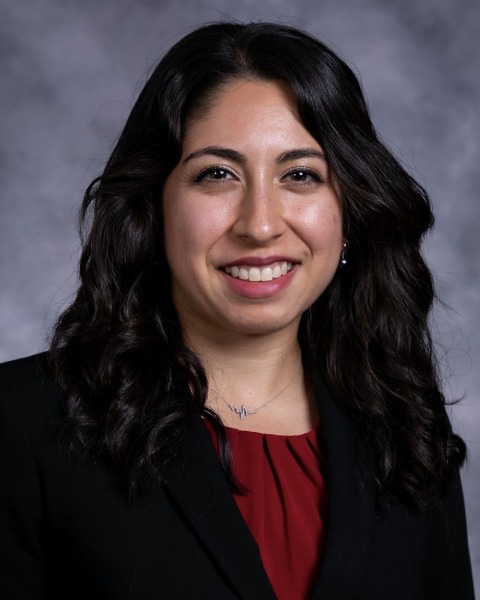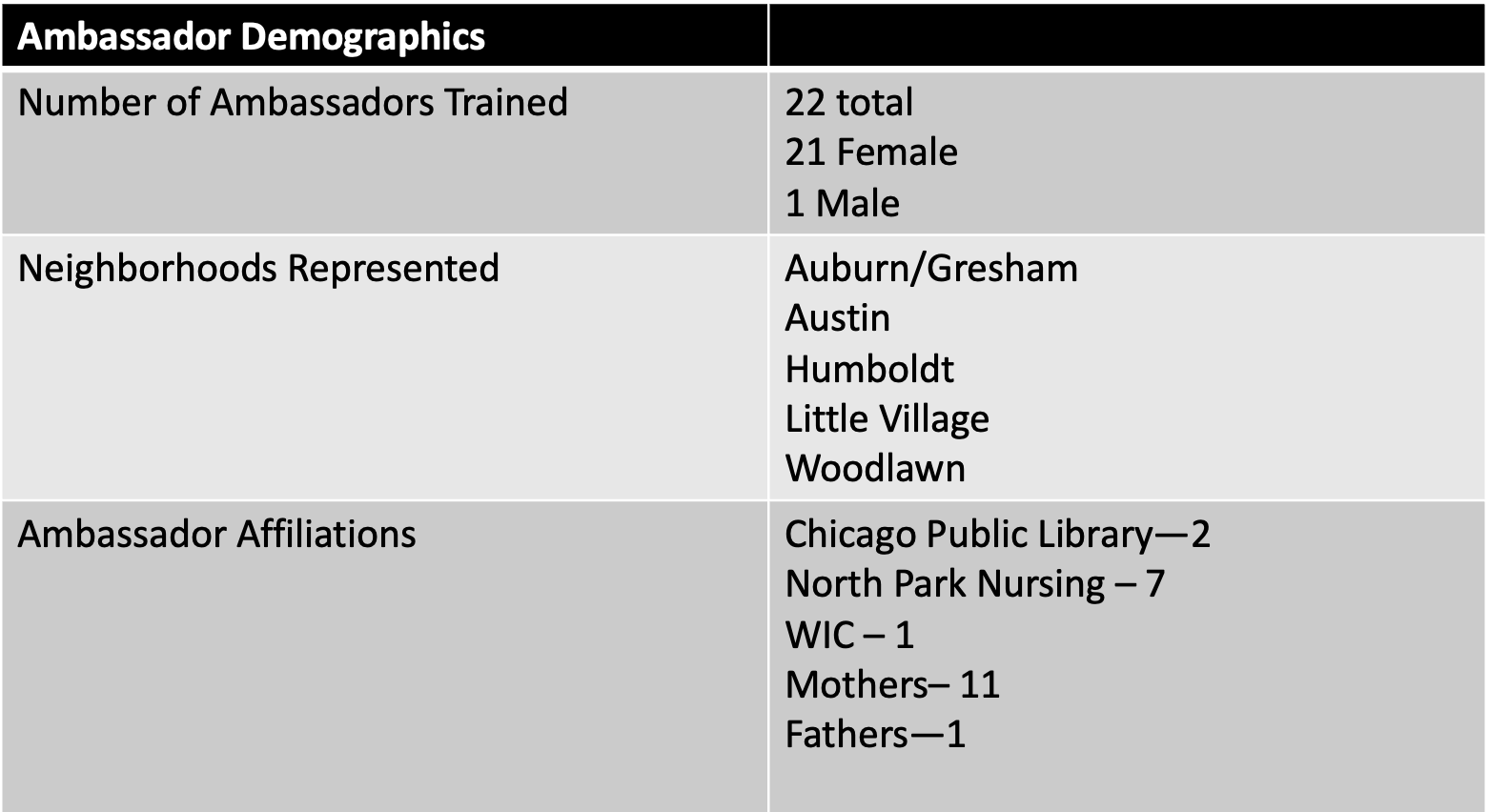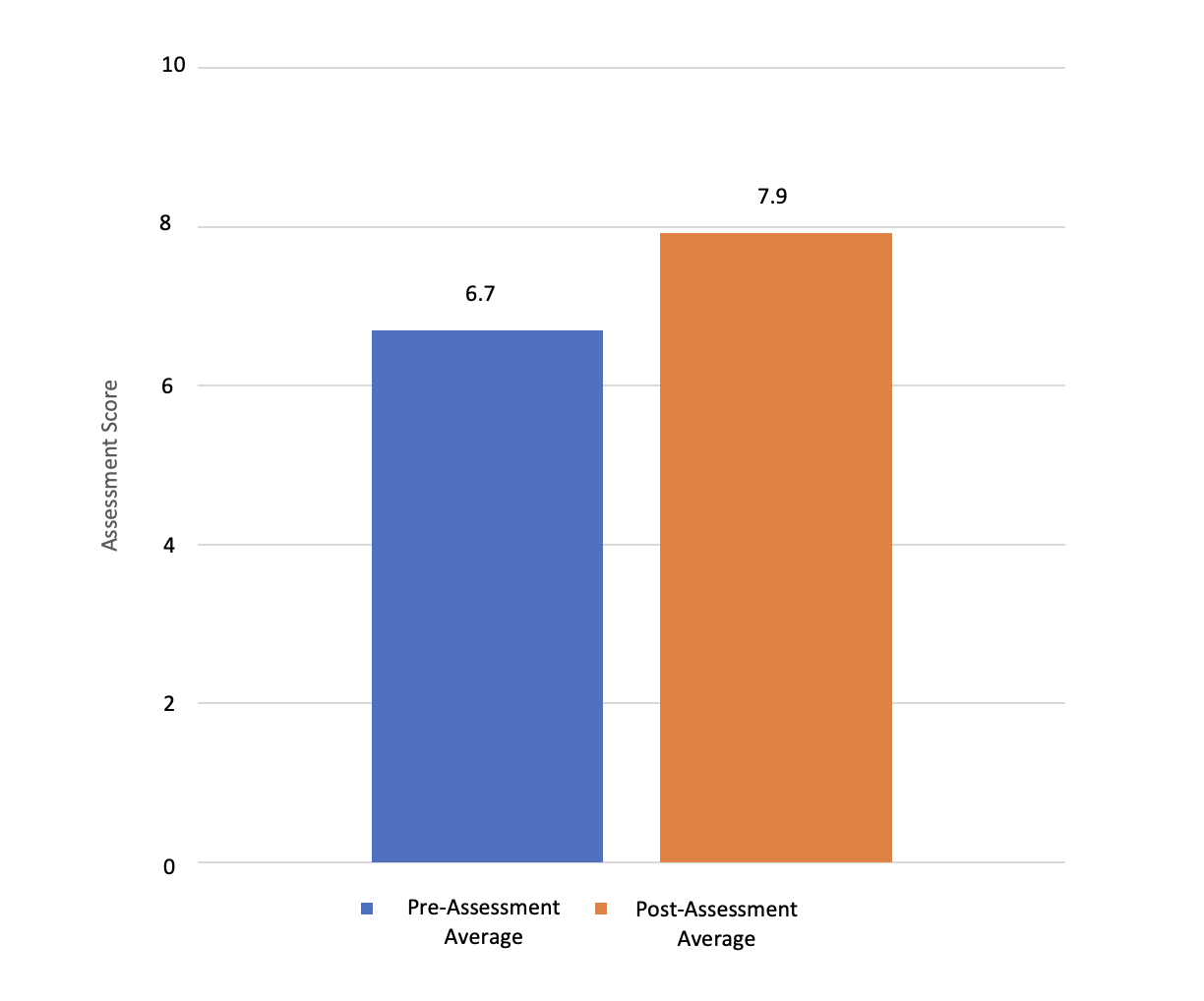Injury Prevention
Injury Prevention 2
320 - Safe Sleep Ambassadors— A Model for Improving Safe Sleep in Communities Using Social Networks
Publication Number: 320.42

Mia DiCara (she/her/hers)
Medical Student
Northwestern University The Feinberg School of Medicine
Long Grove, Illinois, United States
Presenting Author(s)
Background: Approximately 3400 US infants die each year from sleep related deaths; these deaths disproportionately effect minoritized babies. In Cook County, IL sudden unexpected infant death (SUID) is 16 times more likely to occur in Black infants, and 4 times more likely in Hispanic infants compared to White infants.
Objective: To determine if utilizing respected community members as Safe Sleep Ambassadors (SSA) in disenfranchised Chicago communities is an effective strategy to reach parents and infant caregivers about the importance of safe sleep practices.
Design/Methods: A culturally relevant Safe Sleep Curriculum was created to explain reasoning behind infant safe sleep practices. SSA from neighborhoods that disproportionately experience higher rates of sleep related deaths were recruited through community based organizations and underwent virtual training over Zoom from 2020 to 2021. (table 1)
SSA were administered a pre/post-assessment to measure change in safe sleep knowledge. Questions tested knowledge of sleep location, position, and environmental factors (crib, room, decorations) that are fundamental to infant safe sleep. SSA were asked to teach safe sleep practices to 10 caregivers in their communities and distribute safe sleep kits. SSA received a $100 gift card for participating. Follow-up surveys were sent to SSAs and participants in 2022.
Results: Twenty-two SSA were trained during the 2-year period. All completed the pre-assessment and 12 completed the post-assessment. The mean knowledge score (out of ten) on the pre-assessment was 6.8. Of the 12 individuals who completed the post-assessment, the score increased from 6.7 to 7.9 (paired means T-test, p = 0.03).
Qualitative analysis identified that nearly 20% (4/22) of SSA prior to training believed “bumper pads” to be part of a safe sleep approved crib. In the post-assessment no SSA selected “bumper pads” as being safe.
SSA educated 96 community members including mothers, fathers, aunts/uncles, and grandparents consisting of friends, family and other referred caregivers. SSA who struggled to distribute safe sleep kits voiced challenges engaging with community members due to the COVID-19 pandemic.
Conclusion(s): An encouraging foundation of safe sleep knowledge was found on the pre-assessment, which was further improved by the safe sleep curriculum. Initial gaps in understanding of what should be included in a safe sleep approved crib improved after instruction. Ambassadors successfully engaged various infant caregivers in their communities, reinforcing the importance of adhering to safe sleep principles in all environments.

